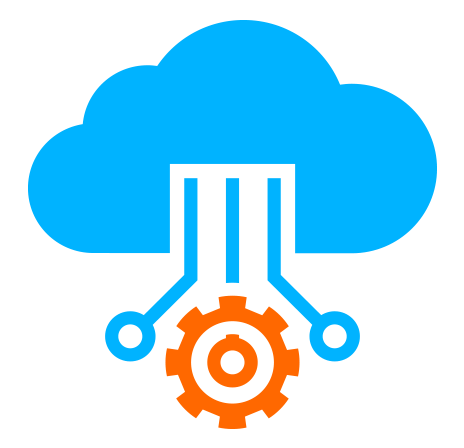 Server
Colocation
Server
Colocation
 CDN
Network
CDN
Network
 Linux Cloud
Hosting
Linux Cloud
Hosting
 VMware Public
Cloud
VMware Public
Cloud
 Multi-Cloud
Hosting
Multi-Cloud
Hosting
 Cloud
Server Hosting
Cloud
Server Hosting
 Kubernetes
Kubernetes
 API Gateway
API Gateway

Hardware as a Service (HaaS) is an IT procurement and delivery model where businesses lease or subscribe to physical hardware and IT infrastructure on a pay-as-you-go basis instead of buying equipment outright. This model eliminates large upfront capital expenses, replacing them with predictable monthly operational costs. The hardware provider or managed service provider (MSP) installs, maintains, upgrades, and replaces devices throughout the contract, enabling businesses to focus on their core activities without worrying about hardware lifecycle management. HaaS offers scalable, up-to-date IT infrastructure tailored to business needs with minimal overhead and risks.
HaaS is a procurement model where businesses obtain essential physical IT equipment—such as servers, networking devices, laptops, or storage systems—through leasing or subscription contracts rather than outright purchase. The service provider owns and manages the hardware, assuming responsibility for installation, maintenance, updates, and end-of-life replacement. This subscription-based approach converts capital-intensive purchases into scalable operational expenses, making it easier for businesses to access and maintain modern technology without large upfront costs or ongoing management overhead.
1. Assessment and Planning: The provider evaluates the customer’s existing hardware, IT environment, and business needs to suggest appropriate equipment.
2. Subscription Setup: Customers select hardware and services best suited to their workflows. The provider offers a pricing plan covering usage, maintenance, and future upgrades.
3. Deployment: Devices are installed and configured on-site or at data centers, integrated with existing systems for seamless operation.
4. Lifecycle Management: The provider actively monitors device performance, applies updates, performs maintenance, and replaces hardware when outdated or malfunctioning.
5. End-of-Life Handling: When equipment reaches its lifecycle's end, the provider responsibly retires and recycles it, replacing the devices with new models, ensuring business continuity without disruption.
No Upfront Costs: Avoid large capital expenditures by paying predictable monthly fees.
Access to Latest Technology: Continuous hardware upgrades avoid obsolescence.
Reduced IT Burden: The provider manages maintenance, support, and replacements, freeing internal IT resources.
Scalability: Quickly scale hardware resources up or down based on business demands.
Cost Efficiency: Reduced total cost of ownership by eliminating repair, downtime, and asset management expenses.
Improved Security and Compliance: Providers ensure hardware runs up-to-date firmware and security patches.
|
Feature |
HaaS |
IaaS (Infrastructure as a Service) |
PaaS (Platform as a Service) |
|
Focus |
Physical hardware leasing and management |
Virtualized infrastructure resources (VMs, storage, etc.) |
Complete cloud computing platform for app development |
|
Ownership |
Provider owns physical hardware |
Provider hosts virtual resources in the cloud |
Provider hosts software and compute platform |
|
Location |
On-site or provider data centers |
Cloud-based |
Cloud-based |
|
Included Services |
Hardware installation, maintenance, upgrade, replacement |
Virtual machine provisioning, network, storage management |
Application development tools, middleware, runtime |
|
Cost Model |
Subscription or usage-based fees |
Pay-as-you-go for compute/storage |
Subscription or usage fees |
HaaS is hardware-centric providing physical IT infrastructure with lifecycle support, while IaaS and PaaS offer virtualized resources and platforms hosted in the cloud for software and services.
> IT Workstations: Laptops, desktops, and peripherals leased with maintenance included.
> Networking Devices: Switches, routers, managed firewalls subscription-based.
> Point-of-Sale (POS) Systems for retail businesses.
> Servers and Storage hardware hosted on-premises or in managed data centers.
> Specialized Industry Devices, e.g., medical imaging hardware or video conferencing equipment.
Businesses ranging from SMBs to large enterprises use HaaS to maintain technology agility without financial strain or operational distractions.
Q: How does HaaS save costs compared to buying hardware?
A: HaaS replaces large capital expenditures with predictable monthly fees, including maintenance and upgrades, which reduces unexpected repair costs and hardware obsolescence.
Q: Can HaaS scale with my business growth?
A: Yes, HaaS contracts allow scaling hardware resources quickly to meet changing business needs, facilitating flexibility without new purchases.
Q: Who is responsible for hardware failures in HaaS?
A: The service provider manages hardware maintenance, repair, and replacement, relieving the business of these operational risks.
Q: What is the difference between HaaS and leasing?
A: While both involve renting equipment, HaaS typically includes full lifecycle management and support services beyond simple leasing.
Q: Is HaaS suitable for cloud infrastructure?
A: HaaS can complement cloud services by providing physical hardware managed on-premises or in data centers, offering hybrid IT solutions.
Conclusion
Hardware as a Service (HaaS) revolutionizes IT infrastructure procurement by eliminating hefty upfront costs and operational burdens of ownership. Businesses gain access to modern, reliable hardware via subscription models that include installation, maintenance, upgrades, and end-of-life management. This flexibility and cost efficiency empower organizations to stay technologically agile, optimize operational expenditure, and focus on core business goals. Cyfuture Cloud’s HaaS offerings provide a comprehensive solution for organizations seeking scalable, managed IT infrastructure without the financial and logistical challenges of traditional hardware ownership.

Let’s talk about the future, and make it happen!
By continuing to use and navigate this website, you are agreeing to the use of cookies.
Find out more


